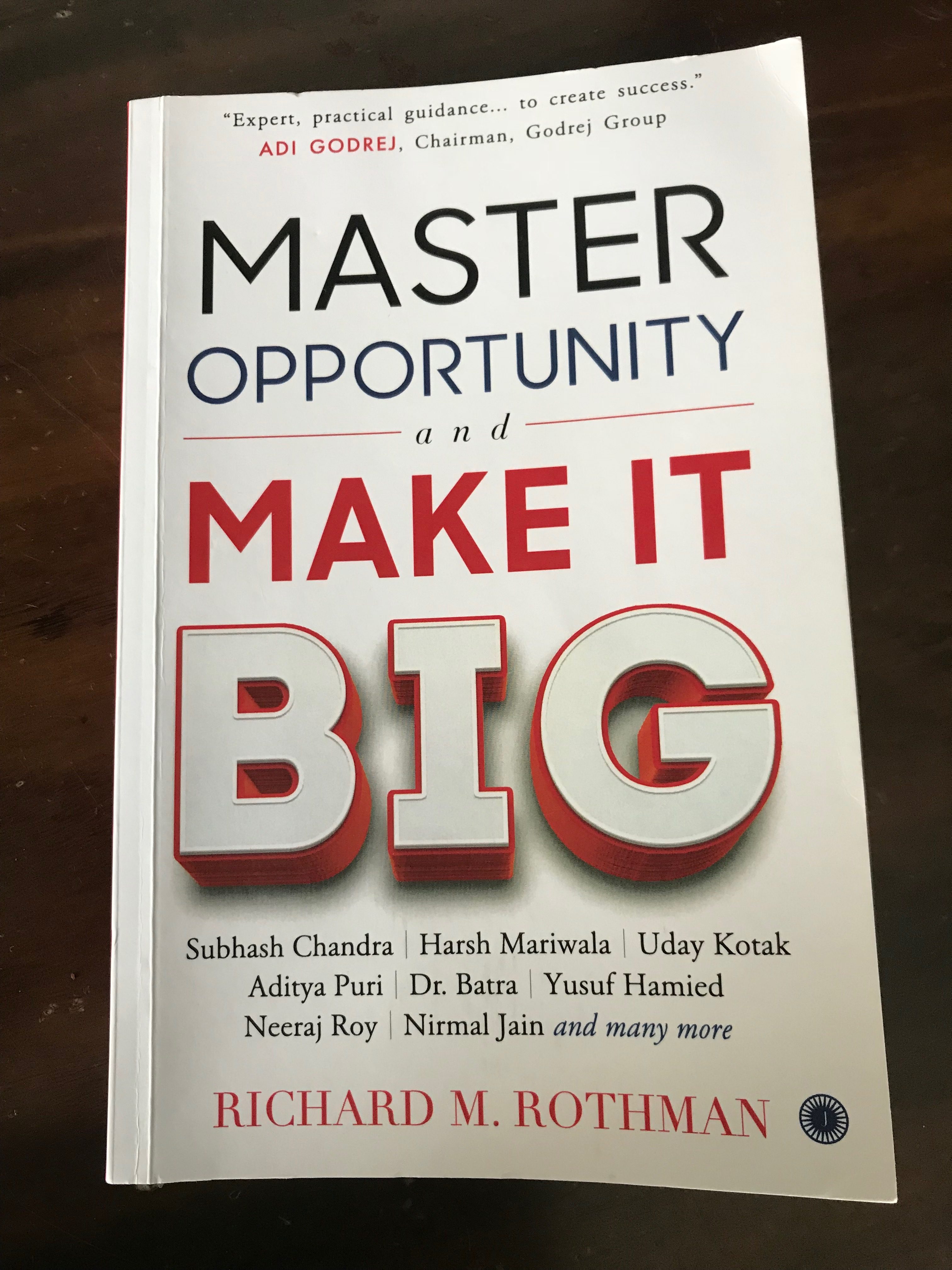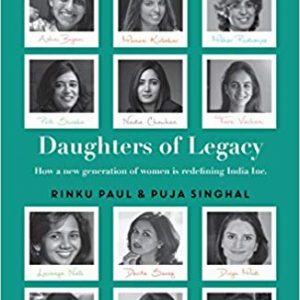There are many books that dissect success. What makes Master Opportunity and Make it Big different? For one, this is a book that primarily focuses on the concept of opportunities. As we all know, success is intrinsically linked to choosing the right opportunities and recognising the opportunities that we should be grabbing.
Rothman, an American settled in India, sees the country as a land of opportunities. He runs a consultancy, OpenMind, which is an Opportunity Consultancy. Through his extensive experience as a consultant, he wishes to debunk many myths that we assume about opportunities.
Rothman believes that success and opportunities are linked in a very strong way. After having interacted with Managing Directors from various companies all over India, Rothman identified a gap in the existing school of thought. While most people believed that opportunities were crucial to success, very few actually had a systemized plan to recognise the correct opportunities and to grab them and convert them into tangible results.
Let’s talk opportunity
As one reads the book, little lessons on opportunities pop up. For instance, the idea that safety nets blind people to opportunities is recurrent. As Vijay Mansukhani, Co-Founder of Onida puts it, “If you have a lot of money and a lot of education, why would you take chances? You’d say they’re too risky, but that’s an illusion. If you have nothing, opportunities become your most important leverage. Sometimes, your only leverage.”
Another aspect discussed in Master Opportunity and Make it Big pertains to recognition of opportunities in a climate of intense change. The OpenMind process created by Rothman seeks to articulate in clear terms the manner in which a person can seek opportunities for sustained growth. The book outlines this process at various stages.
Master Opportunity and Make it Big: Learning from the masters
Case studies have been a crucial and insightful manner to learn from the success of others. After all, who would know more about success and profitable growth than those who have tasted success themselves?
The first part of the book presents success secrets of India’s opportunity masters. It chronicles the stories of the struggles and ensuing success of eighteen of India’s successful business people.
Each story is inspirational in its own right. However, the author has fleshed out one key lesson that the reader can take away from each story.
I found the narrative style quite easy to read and apprehend. To make things interesting he tells the story of the struggle of each individual. However, the lessons that the reader needs to remember are all fleshed out and presented in point form. This makes the experience of navigating the book a smoother one for the readers. So, while they still enjoy a good story, they are aware of the key points that they can learn and practically apply in their work lives. Each chapter ends with a short summary of the golden rules of success based on Rothman’s gleaning.
So, here are just a few of the things you would learn from these case studies: How did Subhash Chandra become a media baron when he started off his career with less than 50 rupees in his pocket? What lessons does Harsh Mariwala have for you in the realm of branding? How did Dr. Yusuf Hamied create an economically beneficial pharma venture and still focused on social benefit and philanthropy with equal gusto? What lessons does the story of Dr. Mukesh Batra hold for those who want to excel in a niche category? Neeraj Roy’s story teaches you how to ride the wave of technological disruption. How can you harvest change for ever increasing opportunities? What does Aditya Puri, who created HDFC bank have to tell you about the role of strong values? Rafique Malik’s story of his journey with Metro Shoes holds lessons on identifying opportunities as the company evolves at every stage. How did Nirmal Jain, a shopkeeper’s son, create IIFL, one of India’s largest financial conglomerates? These and many more questions are answered in the book.
The specificity of the lessons that these entrepreneurs share, is one of the positives of the book.
Sutras to follow
The second part of the book contains forty-four opportunity sutras. These are basically short mantras and tips that have been derived through these extensive interviews as well as from the OpenMind Process in general.
These sutras include opportunity accelerators which are basically traits and habits that work to accelerate the individual’s ability to capture opportunities. They also include opportunity activators which are factors that individuals could focus on in order to find and perceive breakthrough opportunities. Then, it contains opportunity evaluators, which are criteria to evaluate the potential of opportunities that one comes across. Lastly, the book highlights opportunity expediters that go on to speedup the process of implementation.
In short…
An easy to read and practical guide on how one can recognise opportunities, grab them and convert them into tangible success. A mix of storytelling and practical advice though interviews with successful people who started off very small, makes this book inspirational. The opportunity sutras in the second half of the book distill the learnings of the successful entrepreneurs into doable tips. I would have loved to see examples of successful women entrepreneurs though!
However, in all, as the name suggests, this is an apt book to learn about how to master opportunities and make it big!
Title: Master Opportunity and Make it Big
Author: Richard M Rothman
Publisher: Jaico books
Genre: Self-Help, Business





